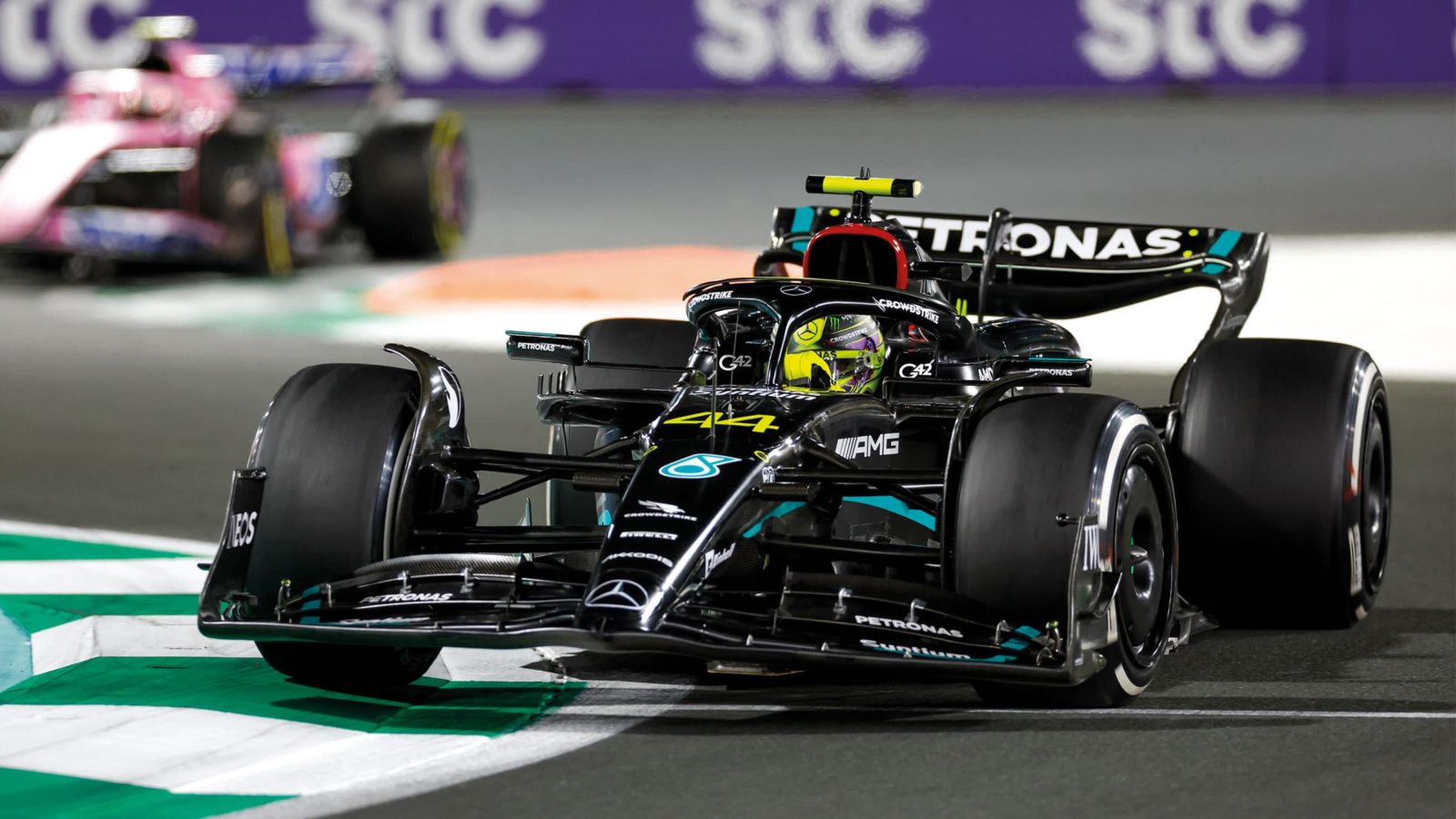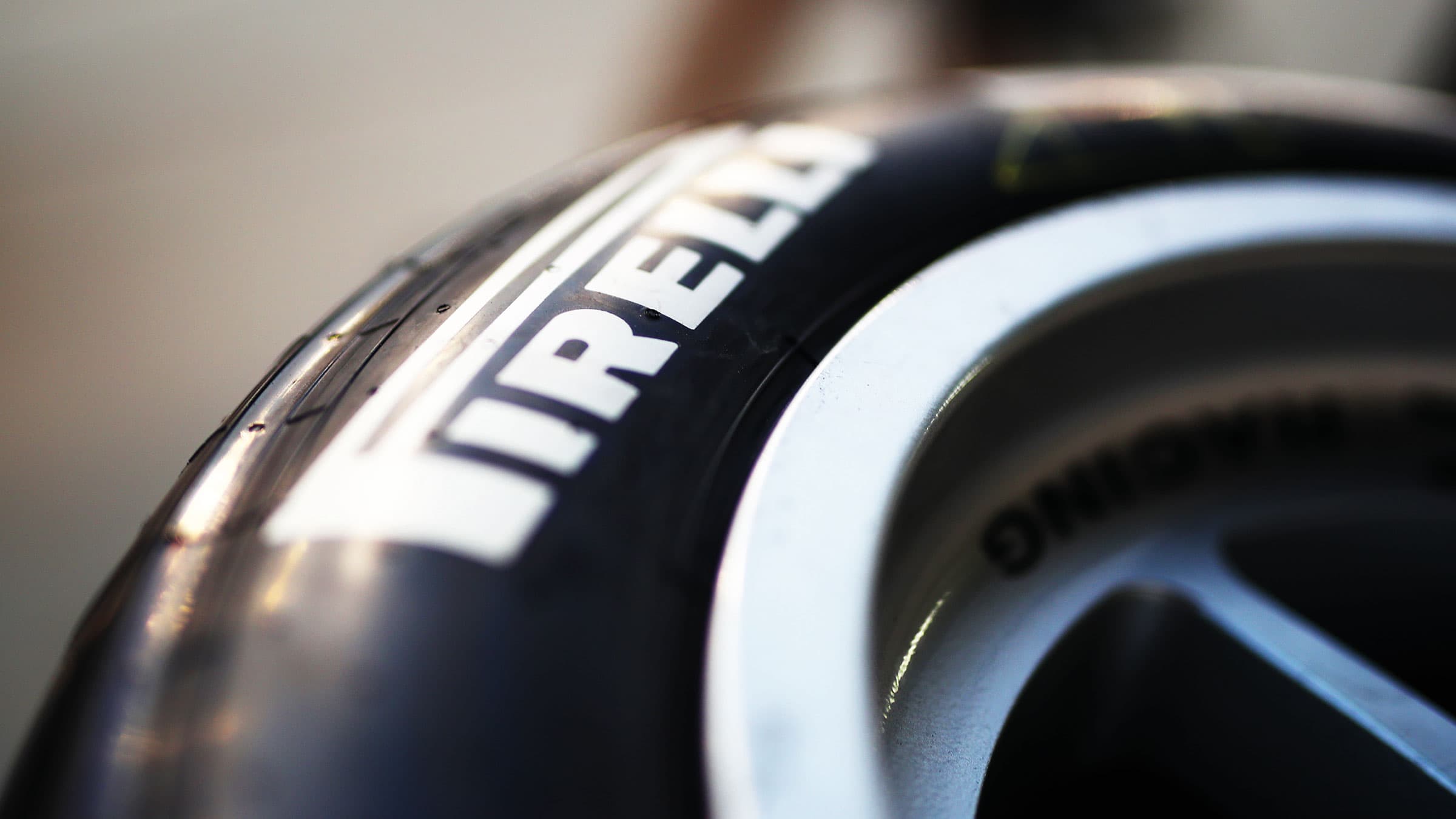How Mercedes looked to overturn the odds with Saudi Arabian GP tyre gamble
Problems persist with the W14 meaning a cunning tyre strategy was needed for Lewis Hamilton in the Jeddah race. Mark Hughes explains how Mercedes’ plan eventually lost grip

Moving centre of pressure gives Hamilton the worst of both worlds
DPPI
Lewis Hamilton was all at sea with the troublesome Mercedes W14 in qualifying at Jeddah. The first sector in particular, with its high-speed bends between the very close walls, requires full confidence and big commitment – and he just was not feeling it. He said he was “disconnected” from the car. Not only that, but it was further off the pace than even last year’s bouncing nightmare W13.
“The W14 was further off the pace than 2022’s bouncing nightmare”
George Russell was just about able to get past the car’s reluctant threshold of front tyre temperatures over a single lap and was consequently a whole lot faster, fourth-quickest in qualifying, 0.4sec up on seventh-fastest Hamilton.
In the long runs of practice, with more laps to get the front tyre heat, Hamilton and Russell were on much the same pace. But starting from the back of the top team group, Hamilton needed to be doing something daringly different for the race – hence his choice of starting on the hard tyre, with everyone ahead of him choosing the medium tyre for what was set to be a one-stop race.
Ideally, what it would allow him to do would be to run much longer than those starting on the mediums and therefore be on much newer and softer tyres in the second stint – when everyone else would be on older hards. That might just be enough of a tyre difference to allow him to make up a few places.

But a lap 17 safety car for Lance Stroll’s broken-down Aston Martin came too early for that scenario to play out. With a 9sec saving over a pitstop taken with the field at full racing speed, he was pretty much obliged to stop at the same time as everyone else (except the Ferraris which had already pitted).
There was also the fear that if he didn’t stop, he’d potentially be a sitting duck at the restart on difficult to warm, worn hard tyres against likely fresh medium-tyred opposition.
He was concerned that the 33 laps remaining might have been a bit of a stretch for the medium. However, the team could already see from Russell’s opening stint on the medium that its degradation rate was literally half that upon which the strategy model had been based.
The track surface had evolved from previous races, as it lost its newness (the track hosted its first race in 2021). It was grippier and kinder to the tread, the front tyres no longer being dragged so much across the surface and getting more purchase. Also, the tyre itself is much better. The new front Pirelli with a stronger construction can run at lower pressures – and the C2 (the medium compound here) is from a completely new family of compounds more advanced than before.
Given the situation he was in, there was no downside. But a different situation – i.e. no safety car or a much later safety car – would probably have seen the strategy work better than it did. The way it panned out was Hamilton being initially quicker in the second stint than Russell who was now on those hard to warm hards. But he wasn’t able to use that as Russell formed a blockage until the hards came up to temperature and Hamilton no longer had a tyre advantage. He followed Russell home in fifth.

